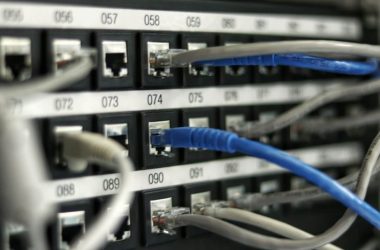Intel has announced the creation of Hala Point, probably the world’s largest neuromorphic system, which marks a significant milestone in the evolution of artificial intelligence (AI) technology. Hala Point, which integrates Intel’s sophisticated Loihi 2 processor, was initially deployed at Sandia National Laboratories.

Hala Point is designed to support research aimed at advancing more sustainable and efficient AI applications, moving away from the energy-intensive demands of current AI systems.
Hala Point builds upon Intel’s first-generation large-scale research system, Pohoiki Springs, and boasts an architecture that supports over 10 times the neuron capacity of its predecessor, enabling “up to 12 times” higher performance. This new system can handle 1.15 billion neurons, pushing the boundaries of what modern AI can achieve in terms of scale and efficiency.
Mike Davies, Director of the Neuromorphic Computing Lab at Intel Labs, highlighted the unsustainable rising costs of today’s AI models, which would necessitate fundamentally new approaches like those enabled by Hala Point. He emphasized that the system combines the efficiency of deep learning with novel, brain-inspired learning, and optimization capabilities.
The importance of Intel’s Hala Point would lie in its state-of-the-art computational efficiencies, which are demonstrated on mainstream AI workloads. The system is capable of executing “up to 20 quadrillion operations per second, or 20 petaops, and exceeds 15 trillion 8-bit operations per second per watt (TOPS/W) when running conventional deep neural networks.” These capabilities significantly surpass those of current graphics processing units (GPU) and central processing units (CPU) architectures, presenting a compelling case for neuromorphic computing in practical applications.
Within a Compact Six-Rack-Unit Data Center Chassis
At Sandia National Laboratories, researchers plan to leverage Hala Point for advanced brain-scale computing studies, particularly in tackling complex scientific computing problems across various domains including device physics and computer architecture. Craig Vineyard, Hala Point team lead at Sandia, noted the system’s capability to enhance their ability to solve computational and scientific modeling challenges effectively.
Intel anticipates that the research conducted with Hala Point will lead to significant advancements in commercial systems, especially in enabling large language models (LLMs) to learn continuously from new data. This is expected to reduce the often unsustainable training burdens associated with deploying AI widely, paving the way for more cost-effective and energy-efficient AI applications.
Hala Point’s use of neuromorphic computing is a revolutionary strategy for AI development. This technology draws on neuroscience insights and integrates memory and computing with high levels of parallelism to minimize data movement. Recent benchmarks have shown that Loihi 2, the processor at the heart of Hala Point, achieves remarkable gains in efficiency, speed, and adaptability for emerging small-scale edge workloads.
The system’s design includes 1,152 Loihi 2 processors within a compact six-rack-unit data center chassis. It supports a vast network of neurons and synapses spread across more than 140,000 neuromorphic processing cores, all while maintaining a maximum power consumption of 2,600 watts. Additionally, Hala Point would boast impressive communication and processing capabilities, with 16 petabytes per second of memory bandwidth and extensive inter-core and inter-chip communication bandwidths.
As Intel continues to develop and deploy new families of large-scale neuromorphic research systems like Hala Point, the potential for real-world, real-time applications of AI would grow. With a community of over 200 members in the Intel Neuromorphic Research Community (INRC), including academic groups, government labs, and research institutions worldwide, Intel is set on advancing this brain-inspired AI technology from research prototypes to commercial products. The development and deployment of Hala Point signify a significant step toward realizing the full potential of neuromorphic computing in overcoming the current limitations of power consumption and latency in AI applications.









